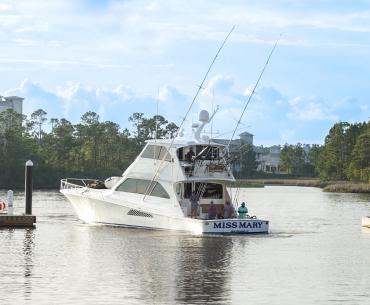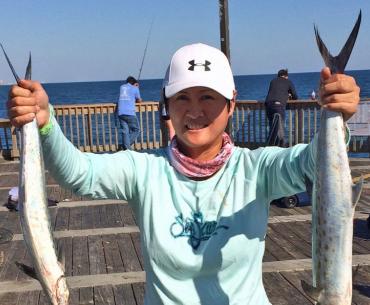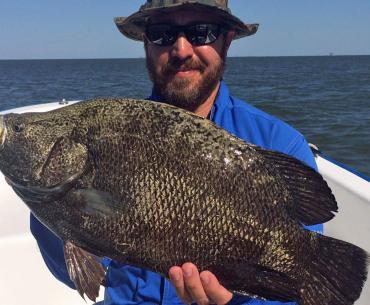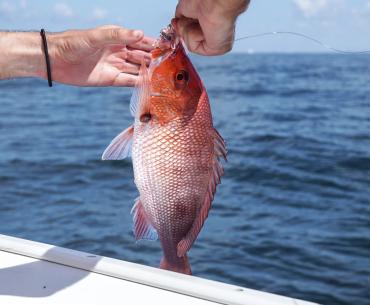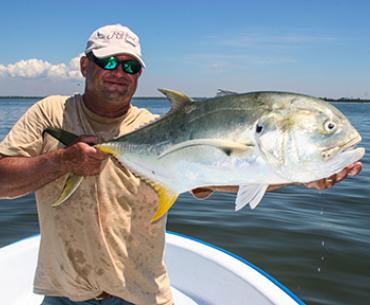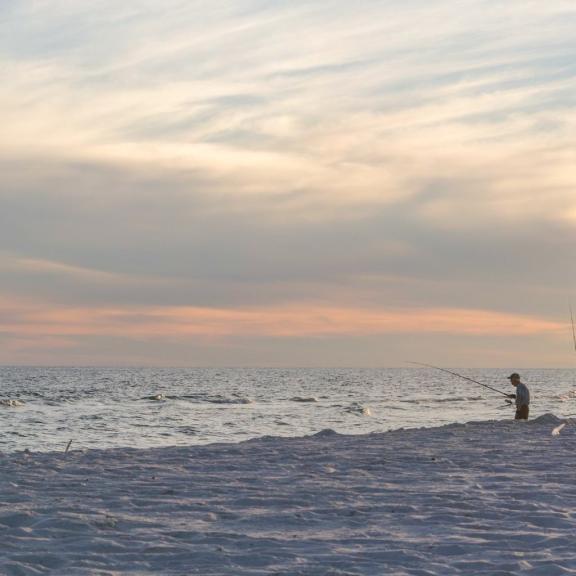
Anglers who target Florida pompano in the surf continue to have a banner year. You'll find pompano most often in the surf zone, where waves stir up the bottom and reveal a variety of crustaceans that make a tasty meal for the species that become more abundant in the spring. Those fishing from boats can also find pompano in shallow water, especially around sandbars on a falling tide.
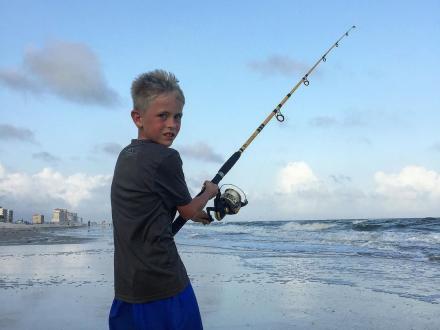
Permit, a cousin of the pompano, have been showing up along the Alabama Gulf Coast in recent years. Two years ago, Alabama anglers caught permit that made the Alabama Saltwater Record Book. Pompano and permit have similar characteristics, but pompano don’t grow nearly as large. The Alabama record pompano of 6 pounds, 13 ounces was caught in 2010 by Patricia Lynn Cluck.
One rule of thumb to differentiate between the species is that small permit have orange patches on their chins, fins, or bellies, while the coloring of pompano in those same areas is yellow. Also, the dorsal fin of the pompano is relatively short and upright, while the permit’s dorsal fin is long and slopes backward.
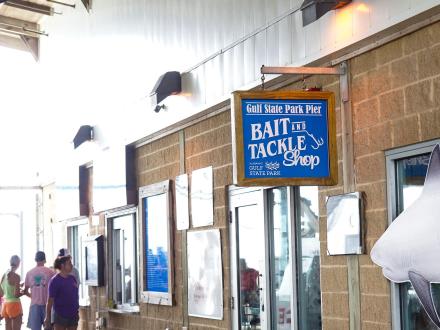
Pompano can’t resist a fresh sand flea (mole crab), or ghost shrimp tossed just beyond the breaking waves. Anglers can find sand fleas by digging in the sand at the surf’s edge or by using a suction pump, which is how ghost shrimp are procured. The local tackle stores will have the suction pumps needed for this bait collection. Many anglers also use a chunk of peeled shrimp on a hook, jighead or pompano rig. Most surf anglers are also adding a chunk of Fish Bites or FISHGUM (made from material soaked in fish attractant) to improve their chances. When the fish are really in a biting mood, a chunk of Fish Bites or FISHGUM is all you need.
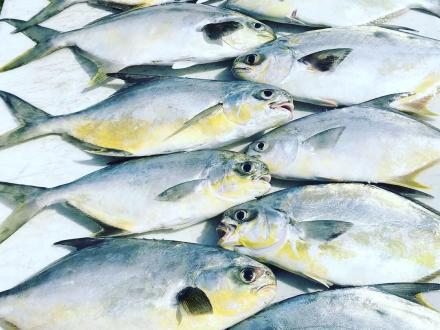
The typical pompano gear is a double-hook rig with the lightest pyramid weight the surf will allow, preferably no more than one ounce, but take a variety of weights to deal with the prevailing surf conditions. When the surf is kicking, a pyramid sinker keeps the bait from being rolled around in the surf. Most anglers use hooks from a size 8 to 1/0. Some anglers prefer Kahle hooks, while others will use a small circle hook.
When you’re looking for spots to fish, try to find the clearest water possible. Schools of three to six fish are typically found in the best spots. Cast your bait several feet beyond the breakers and sit back and enjoy the rhythm of the waves. Depending on the conditions, pompano can sometimes be as far out as the second sandbar from the beach, which will require a long rod with significant casting distance or wading out to waist-deep water.
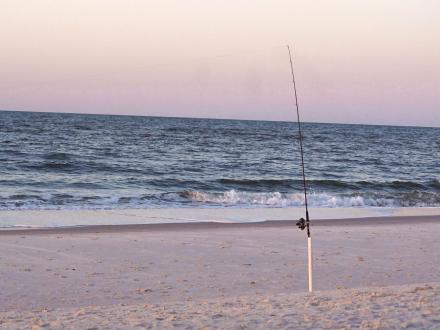
Many veteran surf anglers use several rods to pinpoint different areas of the surf with a variety of tackle and line sizes. A 10-foot rod with a reel spooled with a 15-pound test line works well for the long casts, but sometimes the pompano can be a little finicky. That’s when you go with a light tackle and line to improve your chances of getting a bite. Unless you’re a seasoned surf angler, go with an 8-to-10-pound test line on the light tackle to keep from losing fish. Obviously, it’s best to fish in areas without high concentrations of swimmers.
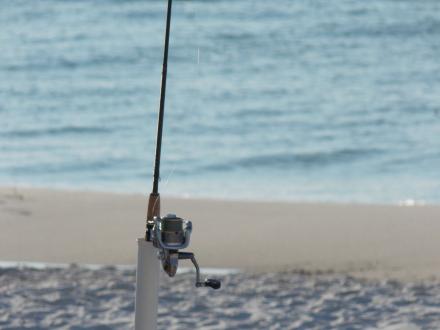
If you’re one of those anglers who don’t like to sit back and relax and must be casting some type of lure, grab some pompano jigs with a short bucktail skirt in vibrant colors. Cast the jig out and hop it to mimic the crustaceans. Let it rest and hop it. Continue that action all the way to the sand.
The Alabama creel limit is three fish per day with a minimum length of 12 inches total length. An Alabama saltwater fishing license is also required. If you’re an Alabama resident who is exempt from buying a license, you still have to enlist in the Saltwater Angler Registry.
Plan a trip to Alabama’s beautiful Gulf Coast this spring and enjoy great surf fishing!
Matthew Isbell, aka the Bama Beach Bum, is a pro at catching pompano. Here are his top five tips for how you can reel 'em in on Alabama's beaches.

